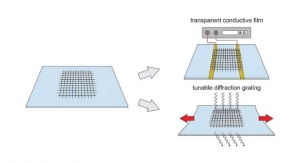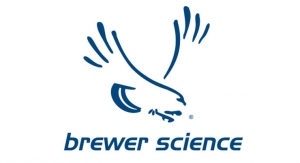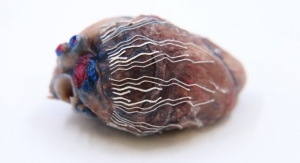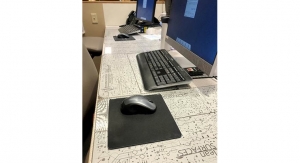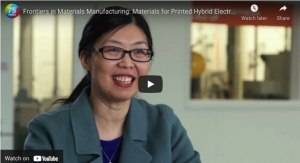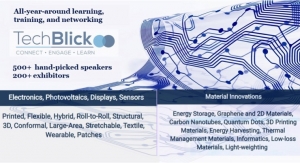David Savastano, Editor10.02.19
As a member of the Manufacturing USA national institutes, NextFlex is the home for developing manufacturing capabilities for flexible hybrid electronics (FHE), from health care to sensors and much more. Formed in 2015 as a partnership between the US Department of Defense and FlexTech Alliance, NextFlex has an interest in governmental applications.
Recently, NextFlex held its fourth annual Innovation Day at its San Jose, CA headquarters, highlighting numerous projects. Among the projects that have significant potential is a gas sensor developed by the National Aeronautics and Space Administration, or NASA as it is far more commonly known. NASA Ames Research Center’s focus is on developing technologies for space exploration.
Dr. Meyya Meyyappan, chief scientist for exploration technology at NASA Ames Research Center, said that flexible hybrid electronics and 3D printing are areas of interest for the agency, which is partnering with NextFlex on biosensor applications.
“Our project is In-Space Manufacturing (ISM),” Dr. Meyyappan said. “NASA has been operating a couple of 3D printers in the International Space Station (ISS) for the last couple of years and successfully using them to print various spare parts and components on demand. There is a catalog of nearly a hundred such items that have been printed in the ISS to date. Future capabilities planned include metal 3D printers and flexible hybrid electronics (FHE) capability in that order.”
Dr. Meyyappan said that NASA Ames’ role is to develop various printing technologies and demonstrations with reliable processes and recipes, which can be eventually transferred to the ISS.
“Our printed electronics applications include gas sensors (crew cabin air quality monitoring, gas leaks), biosensors (crew health monitoring, water quality monitoring), humidity sensors, radiation sensors, antennas, supercapacitors, energy scavenging devices to generate sufficient energy to run the sensors (which require only megawatt (mW) level power) such as triboelectric power generation, and many others,” he observed. “We showcased demos of some of these devices at the latest NextFlex Innovation Day exhibition.”
NASA has developed these applications using silicon wafers. Flexible hybrid electronics offer advantages, beginning with the ability to print these sensors on demand.
“We have a long history of making all of the above using conventional microfabrication on silicon and other wafers,” Dr. Meyyappan noted. “Now we are switching to printing them on an on-demand basis and with a far reduced and less complex infrastructure.
“There are several such unique advantages with the FHE route, including reduced and less complex infrastructure and on-demand capabilities,” he added. “FHE has a natural advantage when considering sweat sensors that could be worn as a wrist band.”
While NASA does not manufacture products, many of its innovations become everyday items. For example, some of the technologies developed for the moon landing – smoke detectors and cordless power tools come to mind – have since become household products. The newest generation of products may someday join that list.
“All of the above have significant commercial potential as you can see,” Dr. Meyyappan concluded. “For example, gas sensors are needed for indoor and outdoor air quality monitoring, industrial leak monitoring and breath analysis. Biosensors have numerous applications in healthcare and environmental monitoring. Our IP generally gets transferred to US industries via licensing.”
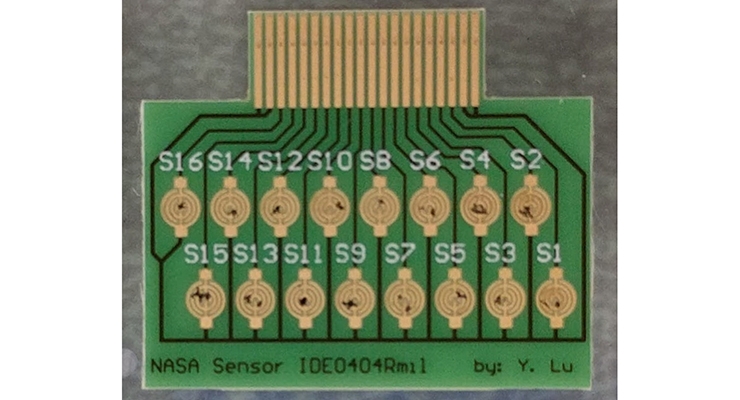
Printed gas sensor. (Credit: NASA Ames Research Center)
Recently, NextFlex held its fourth annual Innovation Day at its San Jose, CA headquarters, highlighting numerous projects. Among the projects that have significant potential is a gas sensor developed by the National Aeronautics and Space Administration, or NASA as it is far more commonly known. NASA Ames Research Center’s focus is on developing technologies for space exploration.
Dr. Meyya Meyyappan, chief scientist for exploration technology at NASA Ames Research Center, said that flexible hybrid electronics and 3D printing are areas of interest for the agency, which is partnering with NextFlex on biosensor applications.
“Our project is In-Space Manufacturing (ISM),” Dr. Meyyappan said. “NASA has been operating a couple of 3D printers in the International Space Station (ISS) for the last couple of years and successfully using them to print various spare parts and components on demand. There is a catalog of nearly a hundred such items that have been printed in the ISS to date. Future capabilities planned include metal 3D printers and flexible hybrid electronics (FHE) capability in that order.”
Dr. Meyyappan said that NASA Ames’ role is to develop various printing technologies and demonstrations with reliable processes and recipes, which can be eventually transferred to the ISS.
“Our printed electronics applications include gas sensors (crew cabin air quality monitoring, gas leaks), biosensors (crew health monitoring, water quality monitoring), humidity sensors, radiation sensors, antennas, supercapacitors, energy scavenging devices to generate sufficient energy to run the sensors (which require only megawatt (mW) level power) such as triboelectric power generation, and many others,” he observed. “We showcased demos of some of these devices at the latest NextFlex Innovation Day exhibition.”
NASA has developed these applications using silicon wafers. Flexible hybrid electronics offer advantages, beginning with the ability to print these sensors on demand.
“We have a long history of making all of the above using conventional microfabrication on silicon and other wafers,” Dr. Meyyappan noted. “Now we are switching to printing them on an on-demand basis and with a far reduced and less complex infrastructure.
“There are several such unique advantages with the FHE route, including reduced and less complex infrastructure and on-demand capabilities,” he added. “FHE has a natural advantage when considering sweat sensors that could be worn as a wrist band.”
While NASA does not manufacture products, many of its innovations become everyday items. For example, some of the technologies developed for the moon landing – smoke detectors and cordless power tools come to mind – have since become household products. The newest generation of products may someday join that list.
“All of the above have significant commercial potential as you can see,” Dr. Meyyappan concluded. “For example, gas sensors are needed for indoor and outdoor air quality monitoring, industrial leak monitoring and breath analysis. Biosensors have numerous applications in healthcare and environmental monitoring. Our IP generally gets transferred to US industries via licensing.”

Printed gas sensor. (Credit: NASA Ames Research Center)

